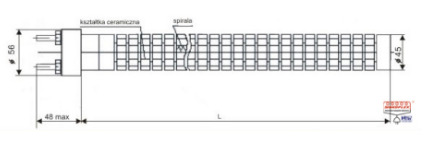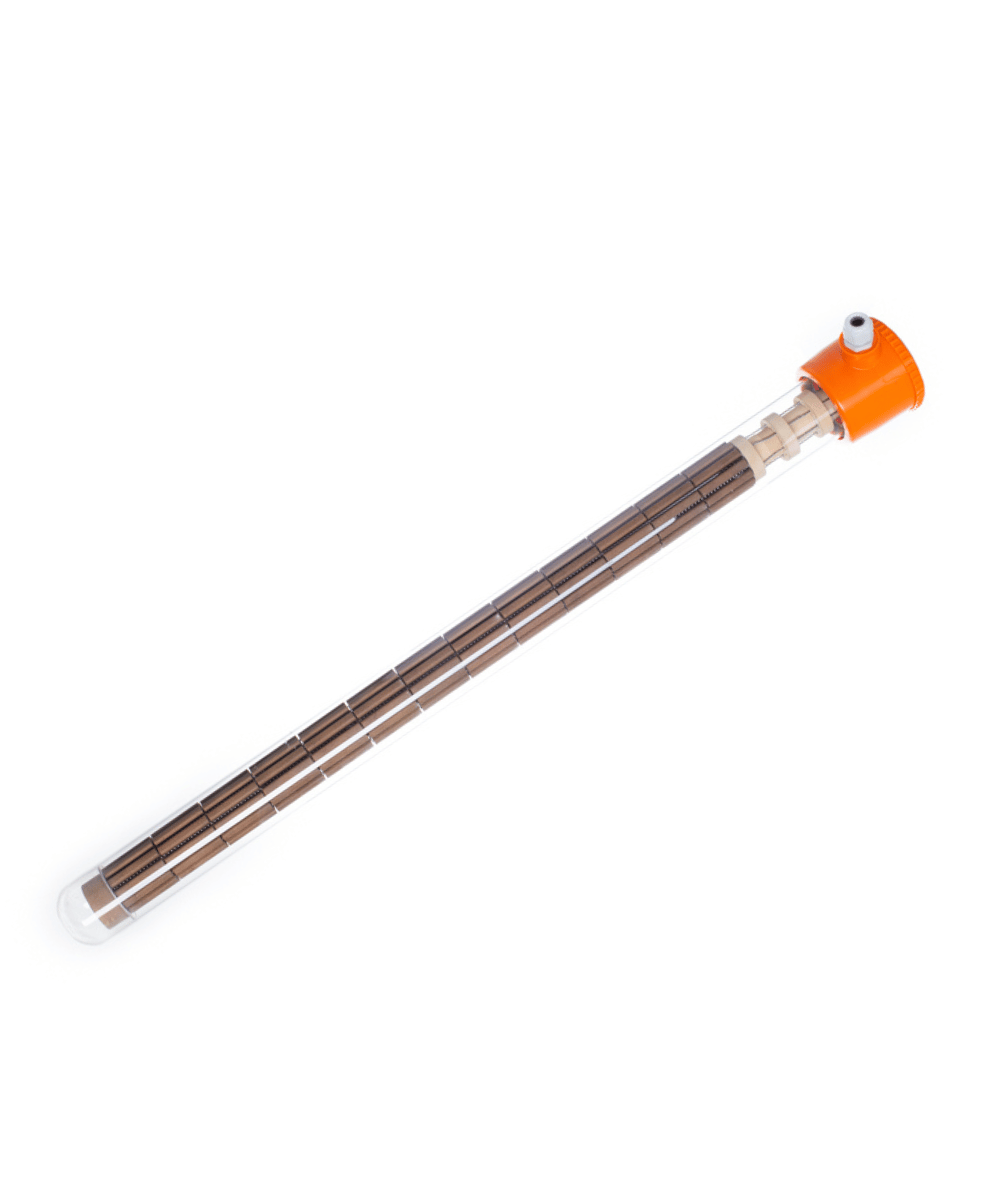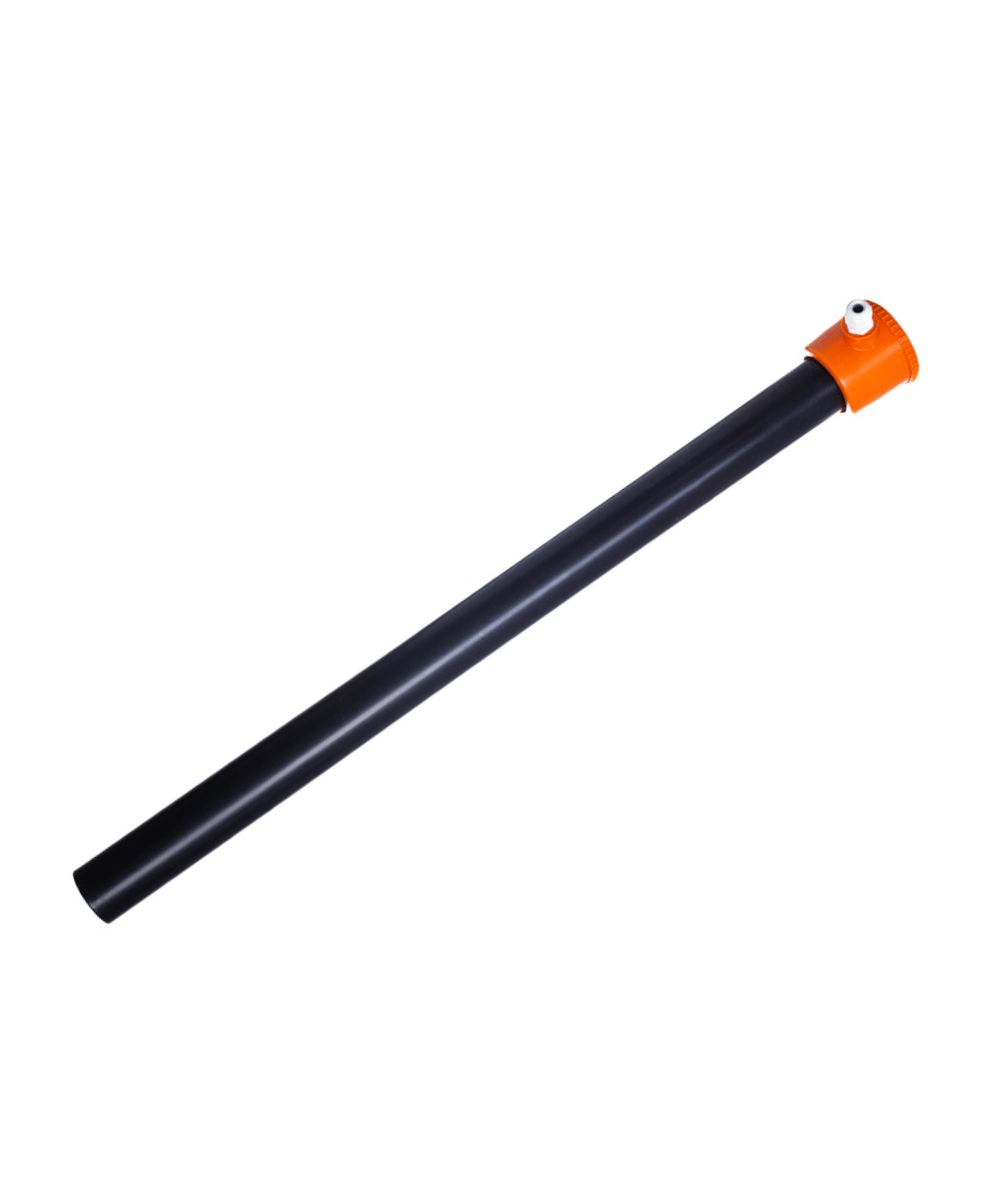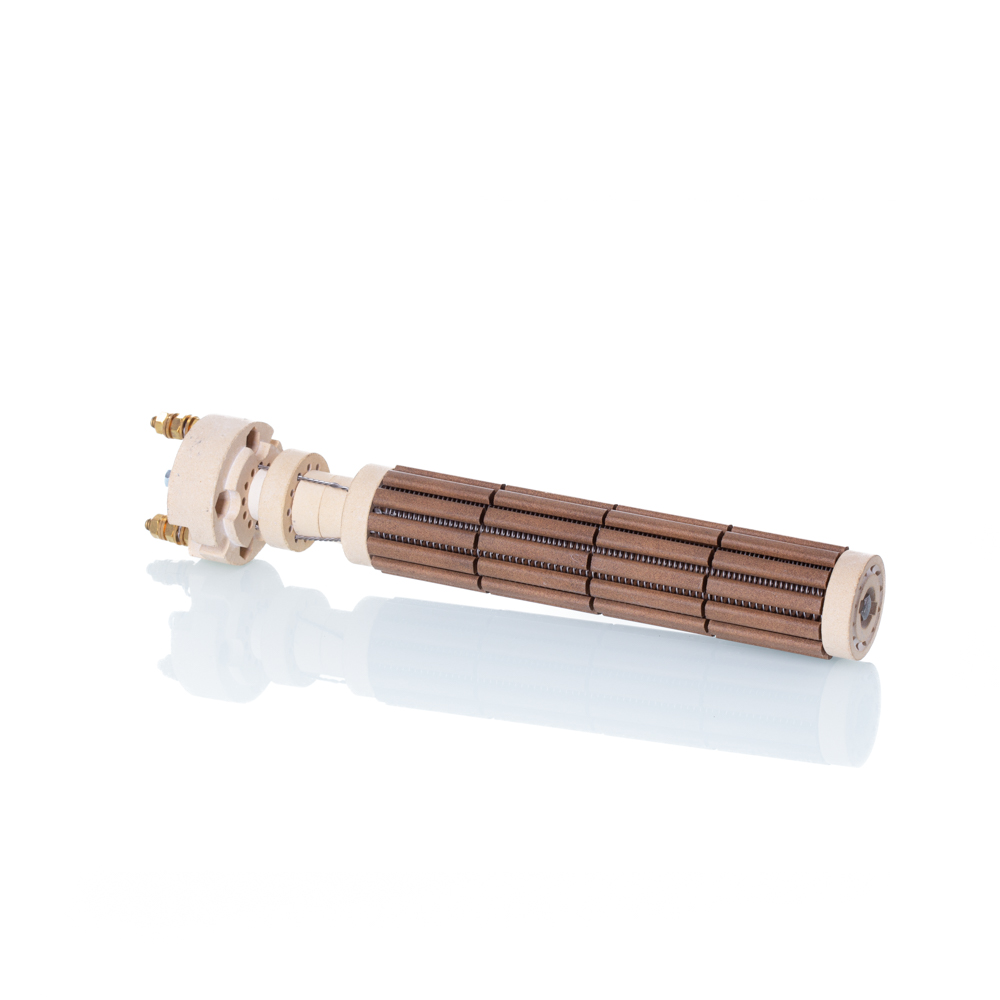Electroplating heaters
Immersion galvanic heaters are used for heating technological baths in tanks and baths adapted for vertical operation, having a modular design. They are used, among others, in processes electroplating, anodizing and etching, where it is required to maintain a stable temperature of the working fluids.
Each heater consists of:
- cover made of quartz, titanium or stainless steel,
- ceramic heating element,
- polypropylene head, which protects the power connections and ensures resistance to chemical fumes and splashes.
Selection of cover material depends on the type of bath: titanium is used for acid baths, quartz for strongly oxidizing, and stainless steel for less aggressive environments. Heaters are mounted vertically, with the heating part immersed in the bath — their design allows easy assembly, disassembly and service.
At the request of the customer heaters can be made with a place for temperature sensor (e.g. thermocouple), which allows for more accurate control of heating processes.
All galvanic heaters are made on individual order, according to the specification provided by the customer.
Basic technical parameters
Heater cross section:
AISI 304, AISI 316Ti, AISI 304 + teflon, quartz glass*
Industries
Specification
- Electroplating — heating of electroplating baths, maintaining a constant temperature in process baths, heating of degreasing baths, heating of etching baths, heating of baths for anodizing and nickel-plating, stabilizing the temperature of electrolytes in coating processes
- Chemical industry — heating of tanks with chemical solutions, temperature maintenance in process reactors, heating of washing and etching baths, temperature stabilization in pipelines with chemicals, heating of baths for metal passivation
- Pharmacology/Pharmaceutical industry — heating baths for cleaning and disinfection of tools, heating of solutions in synthesis processes, maintaining the temperature of baths washing packages and components, heating of tanks with chemical substances for the production of medicines
- Metallurgical and metalworking — heating of the bath for degreasing metal elements, heating of the bath for etching the surface before galvanizing, stabilizing the temperature of the bath for chrome plating and galvanizing, heating of tanks with phosphating solutions, heating of quenching baths
- Laboratories & Research/Laboratory Industry — heating of laboratory baths in small baths, maintaining the temperature of reaction solutions, heating of cleaning baths for laboratory glass, heating of baths for material tests, temperature stabilization in test processes requiring immersion of elements in liquid
- Jewelry industry — heating electroplating baths for gilding, silvering and rhodium plating, maintaining the temperature of jewelry cleaning baths, heating solutions for oxidizing precious metals
- Automotive industry — heating of galvanic baths for coating parts (chrome plating of bumpers, rims, decorative elements), heating of baths for galvanizing structural elements, maintaining the temperature of phosphate baths before powder coating
- Aerospace — heating of the bath for anodizing aluminum elements, maintaining the temperature of the bath for cleaning aircraft parts, heating the bath for specialized anti-corrosion coatings
- Shipbuilding and offshore — heating baths for hot-dip galvanizing of ship parts, heating baths for anti-corrosion protective coatings, maintaining the temperature of baths cleaning metal elements of ships and platforms
- Electronics industry — heating bath for gold plating and tin plating of contacts, heating of PCB cleaning baths, maintaining the temperature of etching baths in electronics manufacturing
- Energy industry — heating of galvanic baths for coating turbine elements, heating of cleaning baths of generator parts, maintaining the temperature of anti-corrosion baths
- Tooling and machinery industry — heating bath for chroming tools, heating bath for nickel-plating machine elements, maintaining the temperature of phosphate baths
- Recycling industry — heating of chemical baths for recovery of precious metals, heating of baths for purification of elements from coatings, temperature stabilization in electrolytic processes
- Furniture industry (metal parts) — heating baths for coating furniture fittings, maintaining the temperature of cleaning baths before painting, heating galvanic baths for decorative coatings
- Medical and Prosthetic Industry — heating baths for coating elements of surgical instruments and implants, maintaining the temperature of cleaning and disinfecting baths, heating solutions for anodizing titanium
- Foundry industry — galvanic heaters are used more as part of the finishing stages (cleaning, pickling, coating).

Types of covers
- Quartz Glass
Our immersion heater consists of a quartz cover, a heating element and a head made of polypropylene resistant to technological baths. The heating element has excellent chemical resistance to all baths (except hydrofluoric and fluoric acid and chrome baths). The quartz mantle can only be destroyed mechanically, not thermally. Quartz glass is resistant to so-called “thermal shock” (sudden changes in temperature).
- Teflon
Galvanic heaters in a Teflon sheath demonstrate resistance to all types of baths. It is the only material suitable for fluorine chromium plating bath and hydrofluoric acid bath. Teflon coating is not resistant to mechanical damage, therefore, even the slightest disruption of its integrity results in damage to the entire surface.
- Steel
Immersion heaters in a steel casing are suitable for acid and alkaline baths. The grade of steel depends on the type of bath (AISI 304, 316Ti). The steel coating is resistant to mechanical damage.
* In any case, there is a marking on the cover, which determines the length of the heating part of the heater.
GGSZ - galvanic heater in quartz glass cover
GGS - galvanic heater in stainless steel casing AISI 304,316L,316Ti,
GGST - galvanic heater in stainless steel casing with additional coating
PTFE - galvanic heater in a teflon cover



.png)
